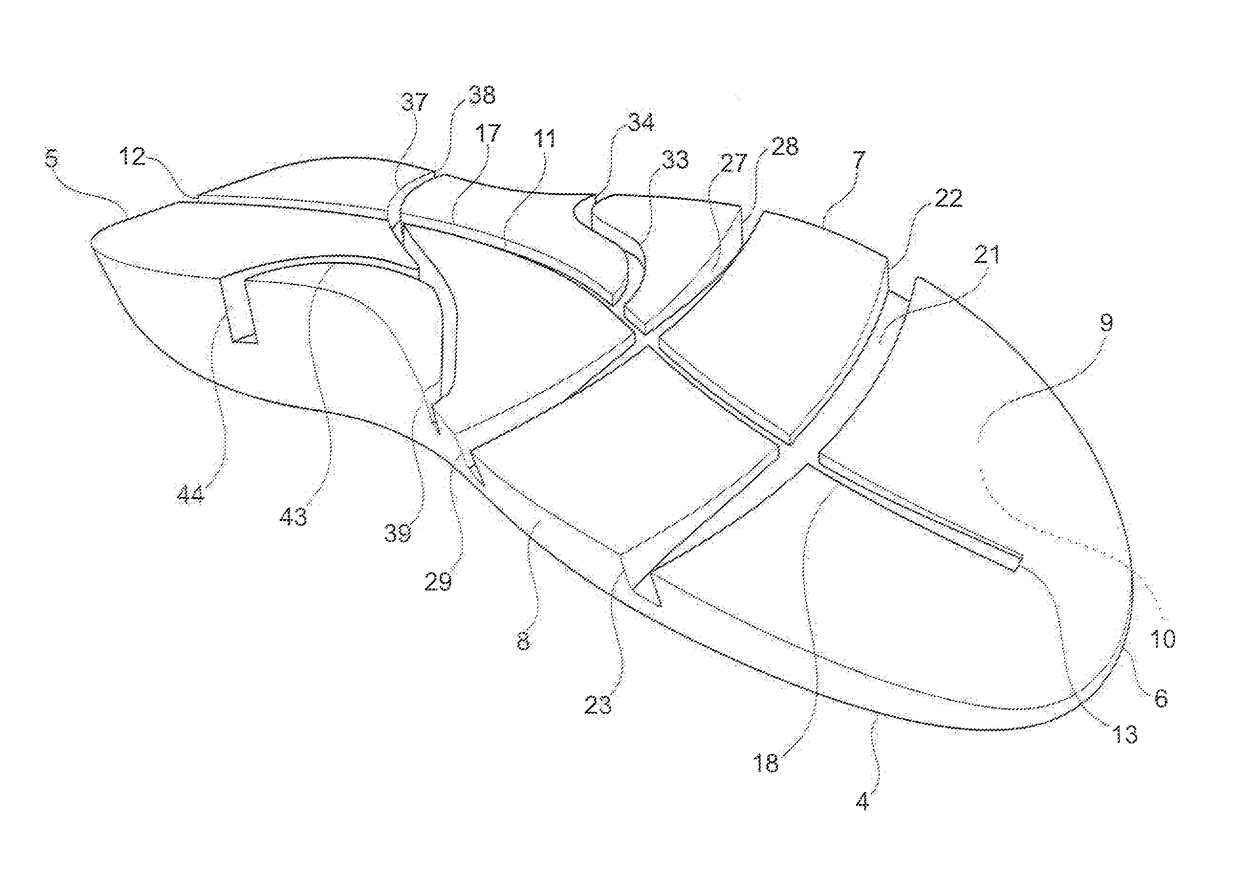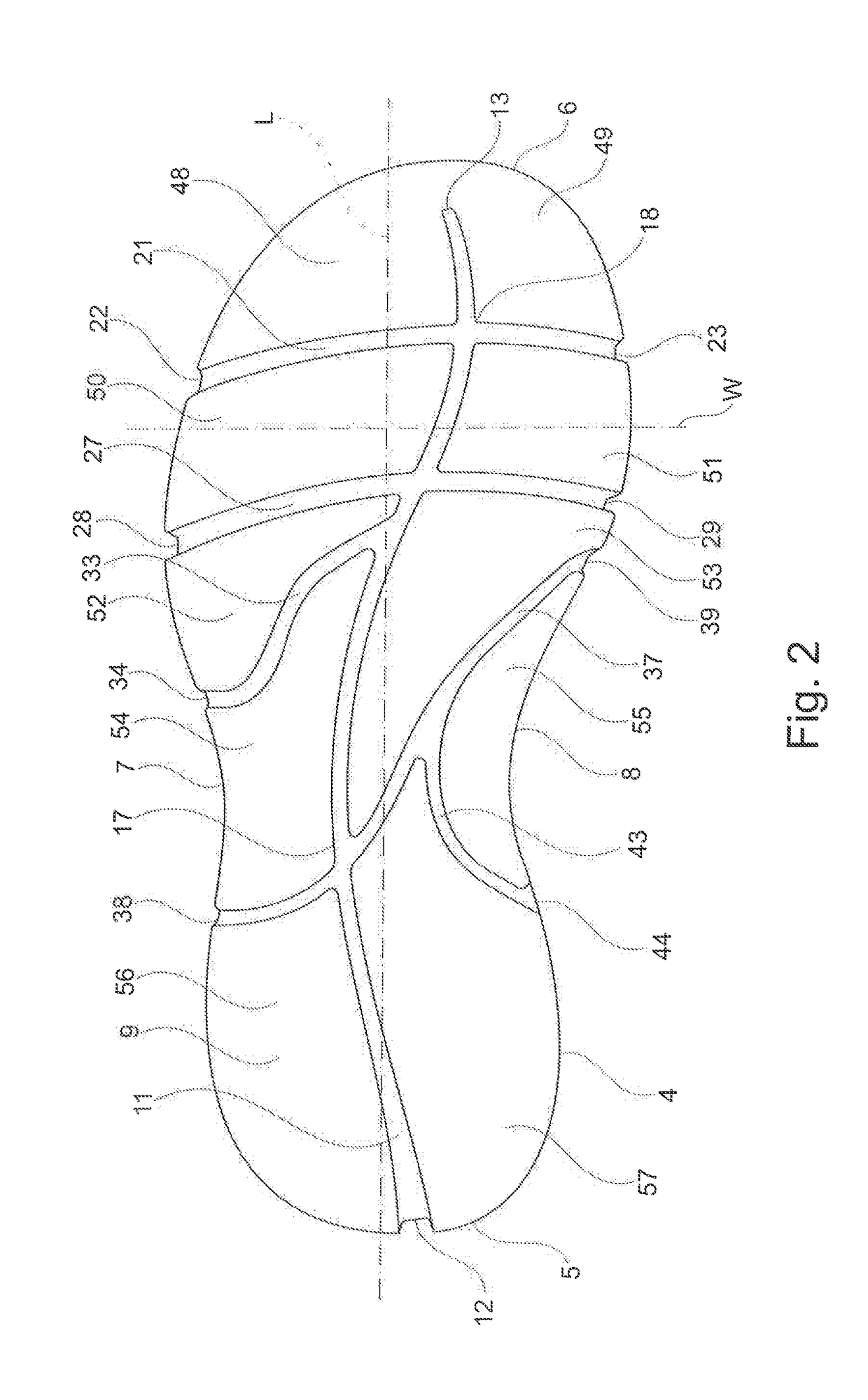Footwear with improved sole assembly
a technology of sole assembly and footwear, applied in the field of footwear, can solve the problems of user fatigue, impact, and inability to accurately or faithfully perceive the support, and achieve the effects of increasing the athletic performance of users, reducing user fatigue, and ensuring stability in the ground suppor
- Summary
- Abstract
- Description
- Claims
- Application Information
AI Technical Summary
Benefits of technology
Problems solved by technology
Method used
Image
Examples
Embodiment Construction
[0017]The embodiment described below with reference to FIGS. 1 to 4 relates for example to a flexible shoe for walking on firm ground or in snow. However, the invention is applicable to other fields, such as those mentioned above.
[0018]As can be understood with reference to FIGS. 1. to 4, a walking shoe 1 is provided to receive the foot of the user.
[0019]The shoe 1 includes an outer sole assembly 2 and an upper 3 affixed to the sole assembly. For reasons of convenience, the upper is shown as a dotted line (see FIG. 4), simply in order not to burden the description. Any upper structure known to one with ordinary skill in the art can be associated with the outer sole assembly 2. The latter comprises a damping sole 4 extending lengthwise, along a longitudinal direction L, from a rear end 5 to a front end 6, widthwise, along a transverse direction W, between a lateral side 7 and a medial side 8, and heightwise, from a lower surface 9 to an upper surface 10.
[0020]The surface 9 is referre...
PUM
 Login to View More
Login to View More Abstract
Description
Claims
Application Information
 Login to View More
Login to View More - R&D
- Intellectual Property
- Life Sciences
- Materials
- Tech Scout
- Unparalleled Data Quality
- Higher Quality Content
- 60% Fewer Hallucinations
Browse by: Latest US Patents, China's latest patents, Technical Efficacy Thesaurus, Application Domain, Technology Topic, Popular Technical Reports.
© 2025 PatSnap. All rights reserved.Legal|Privacy policy|Modern Slavery Act Transparency Statement|Sitemap|About US| Contact US: help@patsnap.com



